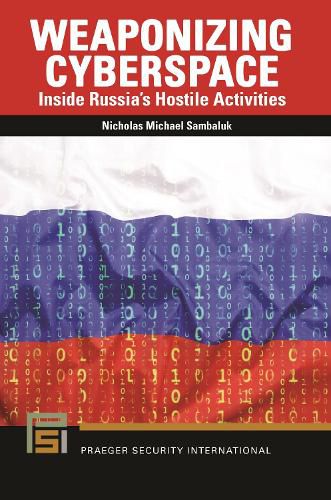Readings Newsletter
Become a Readings Member to make your shopping experience even easier.
Sign in or sign up for free!
You’re not far away from qualifying for FREE standard shipping within Australia
You’ve qualified for FREE standard shipping within Australia
The cart is loading…






The Russian regime’s struggle for internal control drives multifaceted actions in cyberspace that do not stop at national borders. Cybercrime, technical hacking, and disinformation are complementary tools to preserve national power internally while projecting effects onto myriad neighbors and rivals.
Russian activity in the cyber domain is infamous in the United States and other Western countries. Weaponizing Cyberspace explores the Russian proclivity, particularly in the 21st century, for using cyberspace as an environment in which to launch technical attacks and disinformation campaigns that sow chaos and distraction in ways that provide short-term advantage to autocrats in the Kremlin.
Arguing that Russia’s goal is to divide people, Sambaluk explains that Russia’s modus operandi in disinformation campaigning is specifically to find and exploit existing sore spots in other countries. In the U.S., this often means inflaming political tensions among people on the far left and far right. Russia’s actions have taken different forms, including the sophisticated surveillance and sabotage of critical infrastructure, the ransoming of data by criminal groups, and a welter of often mutually contradictory disinformation messages that pollute online discourse within and beyond Russia. Whether deployed to contribute to hybrid war or to psychological fracture and disillusionment in targeted societies, the threat is real and must be understood and effectively addressed.
Explains how the legacy of Soviet information operations and the modern examples of Russian information operations are similar but not identical to one another
Explores the development of Russian domestic information operations techniques that can now be applied against foreign powers
Describes the relationships between technical attacks and disinformation often used in confrontations with countries along Russia’s borders
Examines the role of Russian information operations in U.S. social and political discourse
Considers the implications of other countries’ reactions that attempt to eliminate the Russian information operation’s ability to influence society
$9.00 standard shipping within Australia
FREE standard shipping within Australia for orders over $100.00
Express & International shipping calculated at checkout
The Russian regime’s struggle for internal control drives multifaceted actions in cyberspace that do not stop at national borders. Cybercrime, technical hacking, and disinformation are complementary tools to preserve national power internally while projecting effects onto myriad neighbors and rivals.
Russian activity in the cyber domain is infamous in the United States and other Western countries. Weaponizing Cyberspace explores the Russian proclivity, particularly in the 21st century, for using cyberspace as an environment in which to launch technical attacks and disinformation campaigns that sow chaos and distraction in ways that provide short-term advantage to autocrats in the Kremlin.
Arguing that Russia’s goal is to divide people, Sambaluk explains that Russia’s modus operandi in disinformation campaigning is specifically to find and exploit existing sore spots in other countries. In the U.S., this often means inflaming political tensions among people on the far left and far right. Russia’s actions have taken different forms, including the sophisticated surveillance and sabotage of critical infrastructure, the ransoming of data by criminal groups, and a welter of often mutually contradictory disinformation messages that pollute online discourse within and beyond Russia. Whether deployed to contribute to hybrid war or to psychological fracture and disillusionment in targeted societies, the threat is real and must be understood and effectively addressed.
Explains how the legacy of Soviet information operations and the modern examples of Russian information operations are similar but not identical to one another
Explores the development of Russian domestic information operations techniques that can now be applied against foreign powers
Describes the relationships between technical attacks and disinformation often used in confrontations with countries along Russia’s borders
Examines the role of Russian information operations in U.S. social and political discourse
Considers the implications of other countries’ reactions that attempt to eliminate the Russian information operation’s ability to influence society